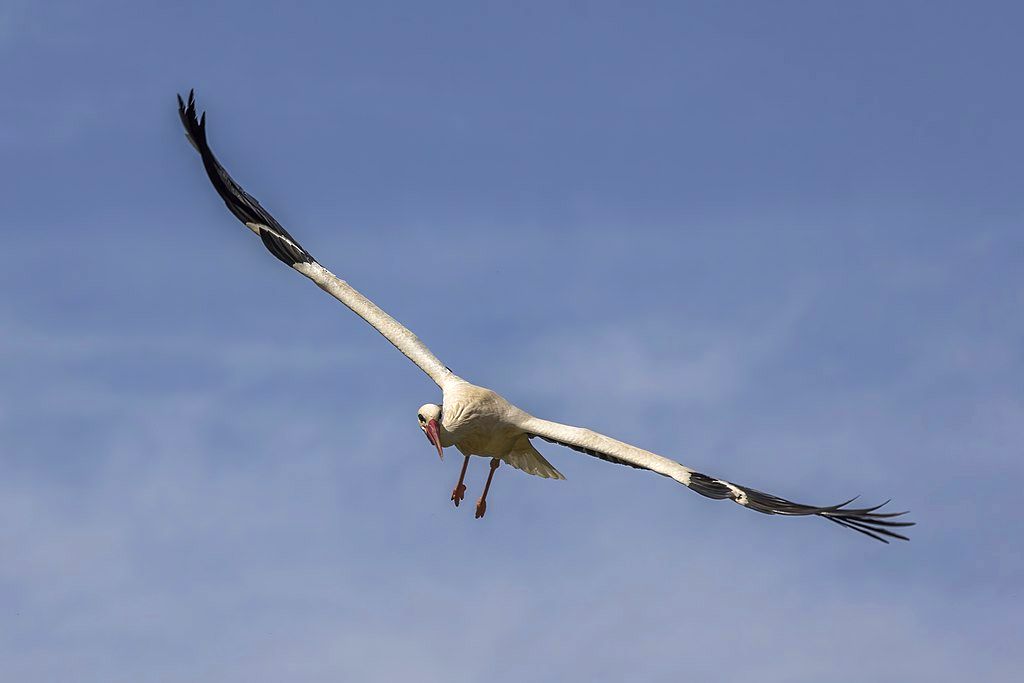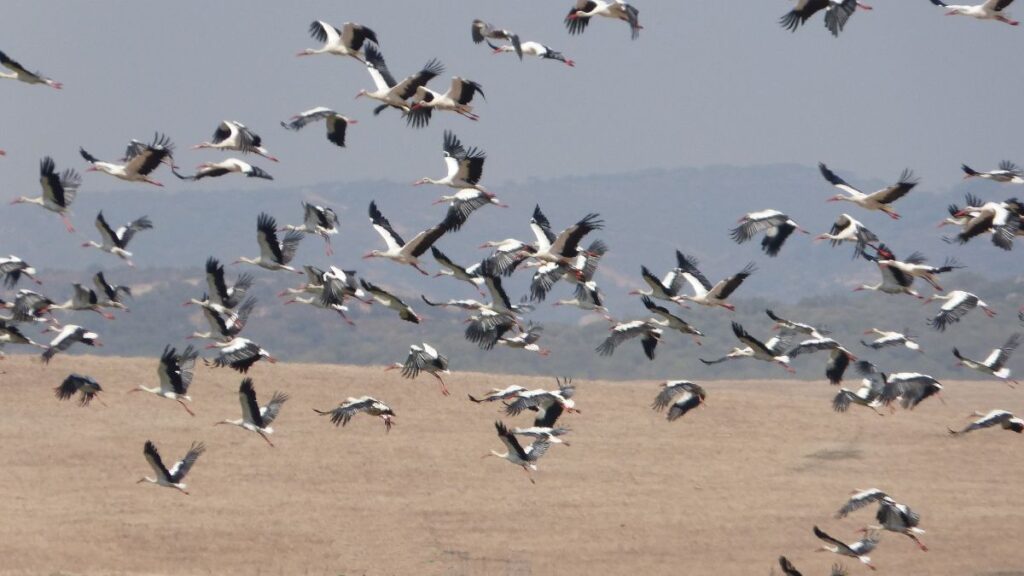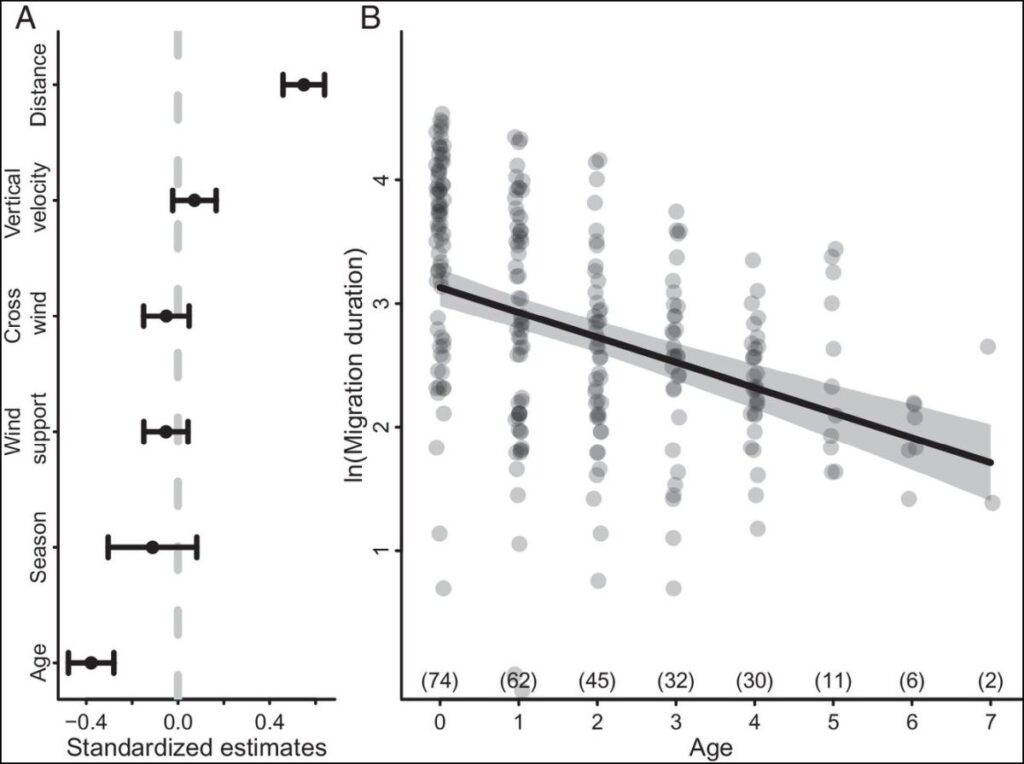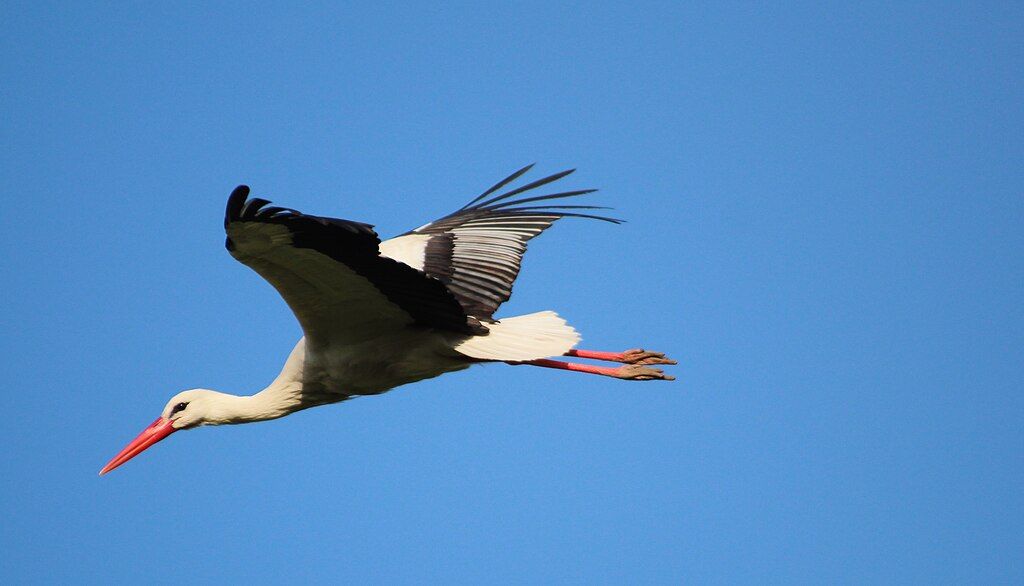
30 October 2024
A long term study of white storks (Ciconia ciconia) in Germany and Austria discovered they improve their migration routes year after year as they gain experience. Older is wiser when it comes to migration.

Back in 2013 researchers fitted more than 250 juvenile white storks with tracking devices that followed each bird as it traveled to its wintering and breeding grounds. As the individuals aged they learned shortcuts, used more direct routes, and moved faster in Spring even though it used more energy.
This graph from the PNAS study Learning shapes the development of migratory behavior shows how the storks’ efforts changed over time.

White storks mate for life and set up housekeeping at age 3 or 4. On the graph we can see that older birds — mated adults — were in a rush to get home but young birds with no nest to reclaim spent time dawdling and exploring.

With age comes experience and changing priorities.
Older is wiser … and more driven.
How about that Halloween themed PBS show on Transylvania this week, which included White Storks — and timely bats, of course!